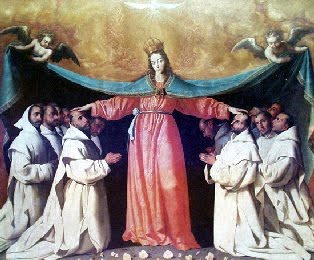 ‘If I ever become a Saint – I will surely be one of darkness. I will continually be absent from Heaven – to light the light of those in darkness on earth’. These are the words of Blessed Teresa of Calcutta. Since her letters became publicly known, she has been under a microscope, and has received most of her criticism from the secular media.
‘If I ever become a Saint – I will surely be one of darkness. I will continually be absent from Heaven – to light the light of those in darkness on earth’. These are the words of Blessed Teresa of Calcutta. Since her letters became publicly known, she has been under a microscope, and has received most of her criticism from the secular media.The very deep, mysterious intensity of Mother Teresa’s spiritual life has been presented in the book, Come Be My Light by Brian Kolodiejchuk, M.C. He first met Mother Teresa in 1977 and joined the Missionaries of Charity in 1984. About her letters, the author wrote in his book: ‘Providentially, Mother Teresa’s spiritual directors preserved some of her correspondence. Thus, when testimonies and documents were gathered during the process of her beatification and canonization, the remarkable story of
 her intimate relationship with Jesus, hidden from even her closest collaborators, was discovered. In contrast to her ordinariness, Mother Teresa’s confidences reveal previously unknown depths of holiness and may very well lead her to be ranked among the greatest mystics of the Church’.
her intimate relationship with Jesus, hidden from even her closest collaborators, was discovered. In contrast to her ordinariness, Mother Teresa’s confidences reveal previously unknown depths of holiness and may very well lead her to be ranked among the greatest mystics of the Church’.The Introduction of the book mentions that for Mother Teresa, ‘the paradoxical and totally unsuspected cost of her mission was that she herself would live in terrible darkness.
This darkness is revealed in a letter to one of her spiritual directors as excerpted here: ‘This terrible sense of loss – this untold darkness – this loneliness, this continual longing for God – which gives me that pain deep down in my heart – Darkness is such that I really do not see – neither with my mind nor with my reason – the place of God in my soul is blank – There is no God in me – when the pain of longing is so great – He does not want me – He is not there – God does not want me’.
It is this type of language and these types of thoughts which led some on a mission to try and discredit the genuine holiness of Mother Teresa. It is nothing more than the devil himself trying to misconstrue what he himself knows is occurring – God’s great purification of His holy one.
This process was explained by Reginald Garrigou-Lagrange, O.P. He wrote in The Three Ages of Interior Life:

‘The reading of the works of Saint John of the Cross leads one to consider the night of the spirit chiefly as a personal passive purification, which prepares the soul for the perfect union with God, called the transforming union. This purification, which in its passive aspect is a mystical state and implies infused contemplation, appears thus as necessary to remove the defects of proficients of whom the author speaks in The Dark Night. The lives of some great servants of God especially dedicated to reparation, to immolation for the salvation of souls or to the apostolate by interior suffering, make one think, however, of a prolongation of the night of the spirit even after their entrance into the transforming union. In such cases, this trial would no longer be chiefly purificatory; it would be above all reparative. The common opinion is that the servants of God are more particularly tried, whether it be that they need a more profound purification, or whether, following the example of Our Lord, they must work by the same means as He used for a great spiritual cause, such as the foundation of a religious order or the salvation of many other souls’.











